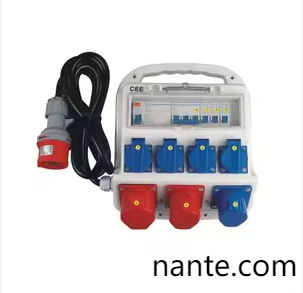For households where toddlers explore every corner, a Socket Box deserves attention beyond its functional role. Recent headlines about power outages and home safety conversations have prompted families to rethink how outlets and junctions fit into daily life. Treating an outlet node as both a utility and a safety point helps parents reduce risk while keeping living spaces comfortable and organized.
Begin by choosing a location strategy that considers child behavior. Low sockets near play areas invite curiosity, so wherever possible place critical outlets above reach or within locked cabinets. Where relocation is not feasible, fit a secure cover that requires a tool or an adult action to open. These covers should not simply block access but allow an adult to plug and unplug safely without removing the protective device each time.
Next, select hardware with safety features built in. Look for enclosures that accept lockable lids, that include child resistant shutter mechanisms, or that provide an inner service compartment so everyday plugs remain out of reach. Properly mounted boxes with captive screws and firm fixings prevent covers from wobbling and reduce the chance a curious hand can force access. Durable seals and tightly fitting panels also stop crumbs and dust from entering and creating hidden risks.
Labeling and simple signage help household members act quickly when a problem occurs. A small plate near the panel that lists how to isolate power, or a diagram showing which breaker controls which room, saves precious minutes in an emergency. Make sure the label remains visible to any adult who may need to act, including visiting caregivers and tradespeople. Consistent labeling across the property reduces confusion and ensures safe responses when someone unfamiliar with the house must intervene.
Managing cords complements inlet protection. Use short runs, cable routing channels, and cable ties to keep loose leads from dangling where tiny hands can grab them. Hide power strips behind furniture or within mounted enclosures and avoid tucking extension leads under rugs where wear and heat build up can occur unnoticed. If outdoor power is used for toys or lighting, place entries inside weather rated boxes and observe simple separation between water sources and energized parts.
Routine inspection supports lasting safety. Add a quick monthly check to your household routine where someone verifies that covers close properly, fixings remain tight, and seals are intact. When moisture or sticky residues show up near an outlet remove power before cleaning and inspect the inside for discoloration or sticky deposits. Replace any suspect gasket or cover item promptly so protective function returns without delay.
Education goes a long way. Briefly explain to older children why sockets are not play items and show them which areas are off limits. For babysitters or temporary helpers leave short written notes about isolation steps and where spares such as protective covers and a small tool kit are stored. Even a short orientation reduces the chance of risky improvisation under time pressure.
Consider professional upgrades where needed. If a room hosts many devices for charging or entertainment, a small distribution node inside a cabinet can centralize feeds and reduce outlet clutter around floor level. A qualified technician can add a dedicated circuit or a properly rated enclosure that keeps routine plugs inside a safe compartment while still supporting high demand loads without risk.
Beyond physical measures, prepare for interruptions. Keep a charged torch and a small emergency kit near the main panel so a simple power event does not create an unsafe situation at night. A clearly marked list of emergency numbers and simple steps to isolate problematic outlets helps anyone take immediate and safe action.
Finally, select suppliers who publish clear installation notes and spare part lists. Having a known source for replacement gaskets covers and locking kits reduces lead time when a protective item wears out. For homeowners who want equipment choices paired with straightforward guidance on installation and maintenance, it helps to review product pages and technical notes before buying so the selected solution fits both style and safety needs.
If you are reviewing outlet protection options and serviceable covers for family living spaces, consider examining product information and accessory kits that balance access control with everyday convenience. For specification sheets, mounting notes and spare part references visit https://www.nante.com/ , where you can compare enclosure options and find guidance that helps match solutions to household routines and safety priorities.

